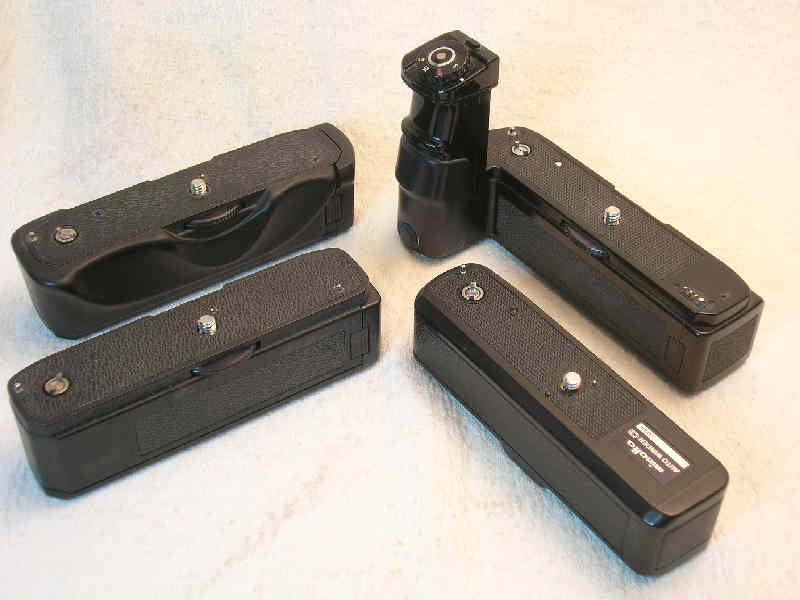
POWER WINDERS, AUTOWINDERS, & MOTOR DRIVES

To begin, a definition. Most manufacturers and shutterbugs refer to an "Autowinder" as a device that can advance film at up to 2 frames per second, and a "Motor drive" as a similar device (usually larger and heavier) that can advance the film at a higher rate of speed -- assuming the shutter speed that is used is fast enough. The term "Power Winder" is often seen, as well. Any of these can be built into a camera or as a detachable accessory. But this definition is completely arbitrary, and the terms are used interchangeably here.
A variety of power winders and motor drives were made for the numerous Minolta and Chinese/Minolta cameras. But not all of these cameras accept power winders or motor drives, and those that did could only be used with specific power winders and motor drives. To complicate matters even more, some cameras were designed to accept a power winder or motor drive, but one was never made.
First, you need to determine if the camera in question is designed to accept a power winder or motor drive at all. You can do this by looking at the bottom of the camera -- or reading the owner's manual, etc. It's best to look at the camera to determine what mechanical and electrical connections there are. Here are a few examples:

In the above photo, starting with "A" are:
Cameras that accept a motor drive or winder always have a mechanical connection on the far right end of the body, under the film advance lever -- to the right of the film re-wind button. (The hole next to the screw is just a winder alignment connection.)
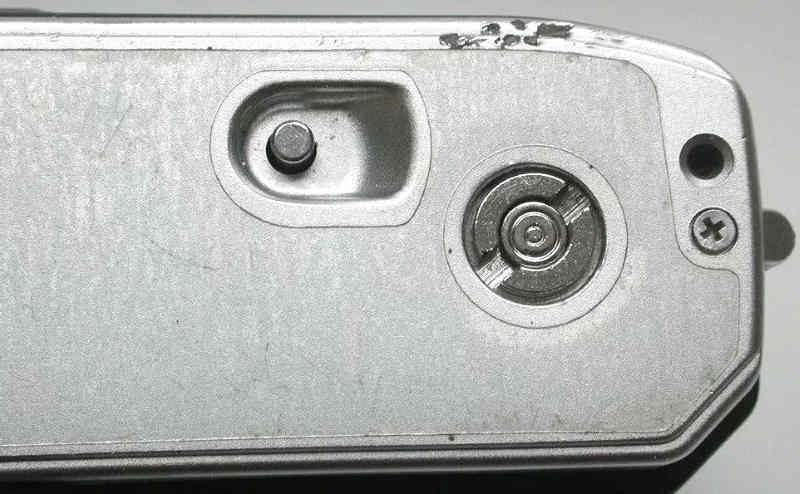
You can see the pictured connection on cameras A, C, D, and E. Cameras B and F do not have this connection and do not accept a power winder. For cameras that accept an autowinder, there might be one or more electrical connections between the camera bottom and the power winder. On cameras C, D, and E you will notice a small contact to the upper left of the tripod socket. On cameras C and D, you can see an additional row of contacts on the far left end of the camera body. The number of contacts determines which winders and drives can be used, as well as which features they will provide. The camera and winder do not have to have all of the same contacts to operate, but if the camera and the winder don't have the same contacts, some features will not function.
Most of Minolta's winders will work on most Chinese/Minolta cameras that accept power winders, and most Chinese/Minolta power winders will work on most Minolta cameras that accept power winders. There are only a few exceptions.
The Minolta and the Chinese/Minolta autowinders and motor drives can be placed into five groups, based on their features.
1. The first group -- I call them "G winders" -- are the simplest autowinders because they have the least features. The first, of course, was the Minolta Autowinder G which appeared with the introduction of the Minolta XG-7, XG-2, and XG-E cameras in 1977 (they are all the same camera, just named differently for different markets). These "G" winders will also work with any of the later Minolta 35mm SLR cameras, as well as most of the Chinese/Minolta cameras that accept a power winder -- but not all of them do.
Minolta soon came out with a slightly modified Autowinder G, labeled the Autowinder GP. The only change is that the GP has a small extension that fits into the camera's battery chamber to power the camera, as well as the autowinder. Some people find this a convenience, while others find it a nuisance because you have to find a place to store the tiny, easy-to-lose, battery chamber cover. The Autowinder GP is hard to find, while the standard Autowinder G is easy to find -- at ridiculously low prices.
There are similar autowinders from other companies with many other names, such as Cobra,
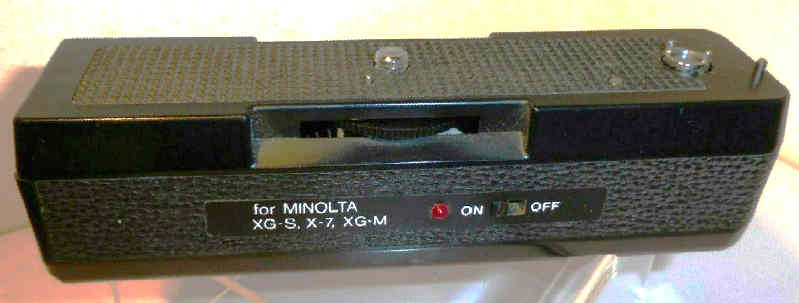
Rokinon, Y.I.K.,
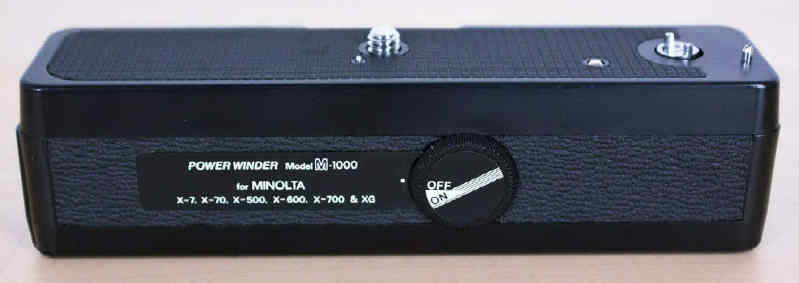
Arkon, Albinar,
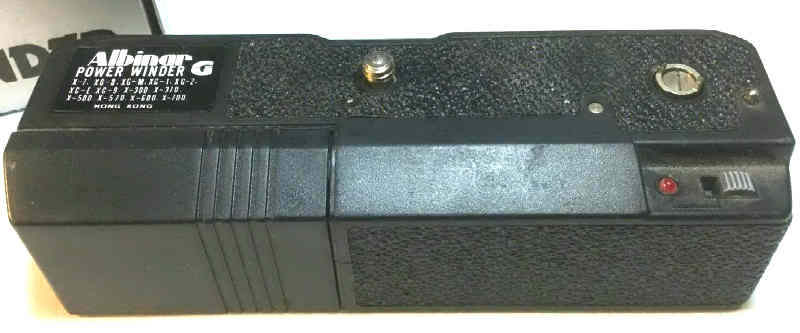
Maxwell, Spiratone and more that were designed to work with Minolta's XG line of cameras. They, more or less, have the look and feel of the Minolta Autowinder G -- and offer the same features. These will also operate with the Chinese/Minolta cameras that accept G-type autowinders.
The Minolta Autowinder G looks the same as the Minolta Autowinder D -- which was designed for the Minolta XD line of cameras, but it is not compatible with the XG and later Minolta cameras -- nor is it compatible with any of the Chinese/Minolta variants.
Here is a Kalimar KX 7000 camera with a genuine Minolta Autowinder G:
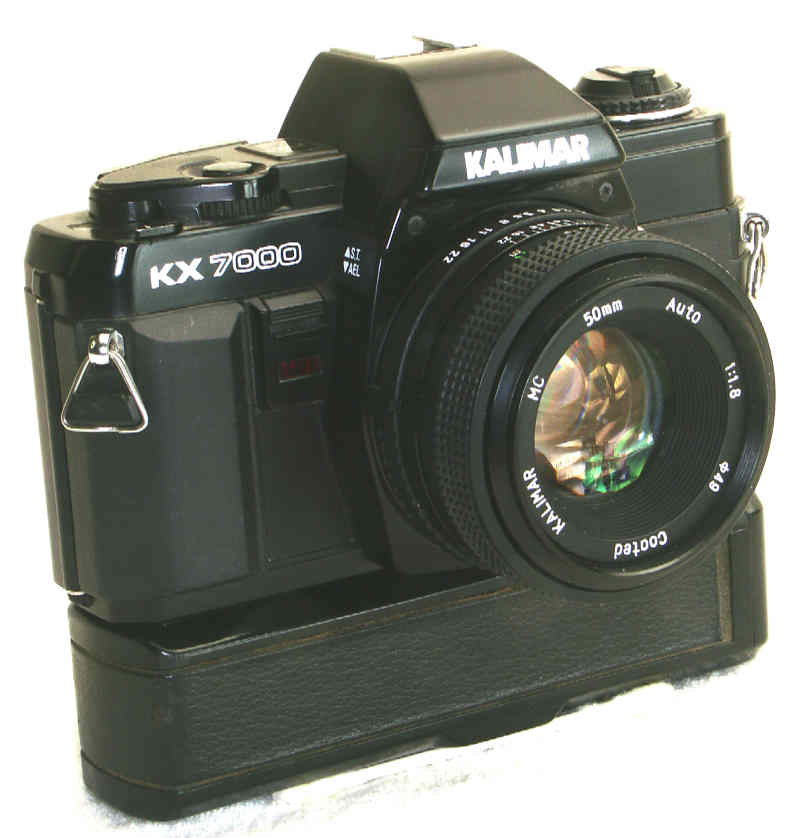
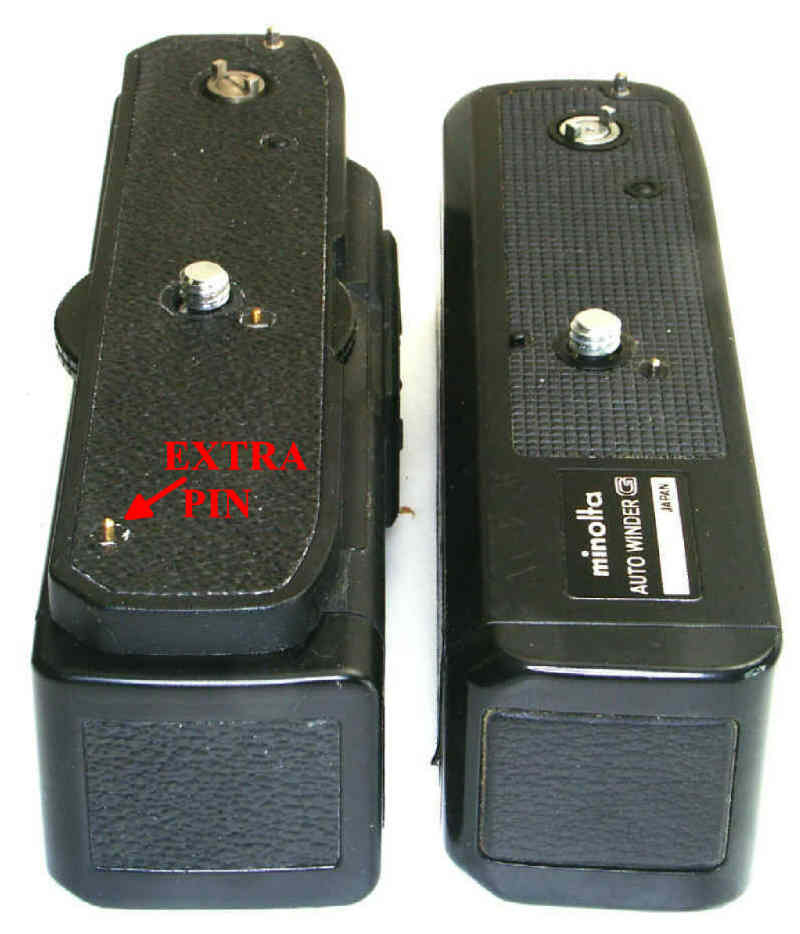
On the right in this picture is a Minolta Autowinder G. On the left is the slightly larger Phoenix Power Winder. Notice the extra pin on the Phoenix Power Winder. This allows you to choose between single or continuous operation with the switch on the back.
This type of winder was available under the Phoenix brand, but other names as well, such as Kalimar:
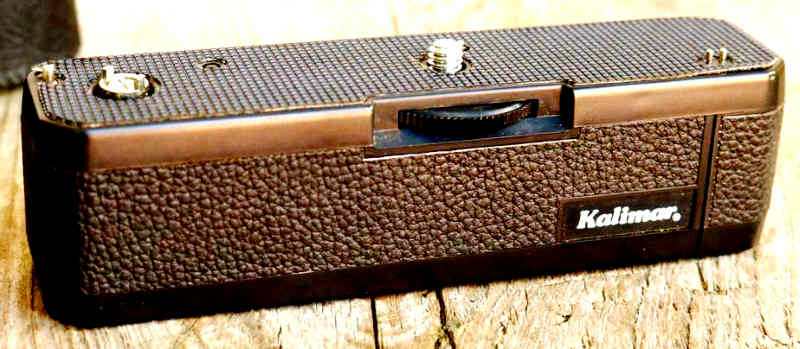
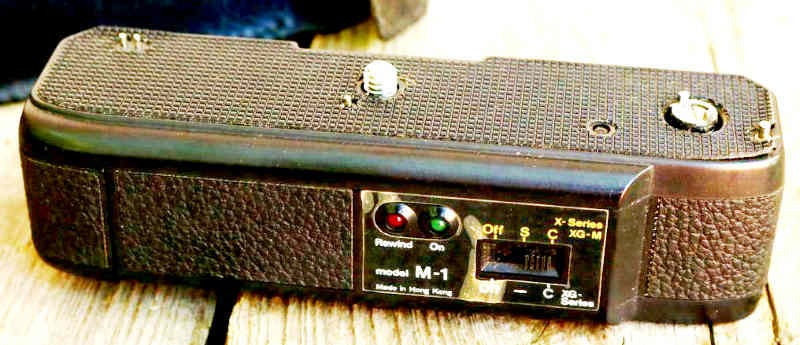
This type of winder can be used on any Minolta XG or later Minolta SLR camera -- but it will only provide single action film advance on some of them, such as the Minolta XG-M and X-700. And, of course, you can always simply remove your finger from the shutter release to accomplish single film advance -- with cameras such as the XG-7 and XG-9. The M-1 winders will work on the Chinese/Minolta cameras that accept a G-type winder, but as with Minolta cameras, the functions will vary depending on the camera's capability.
Phoenix made a special M-1 power winder for its P-5000 camera, although it was not labeled "M-1".
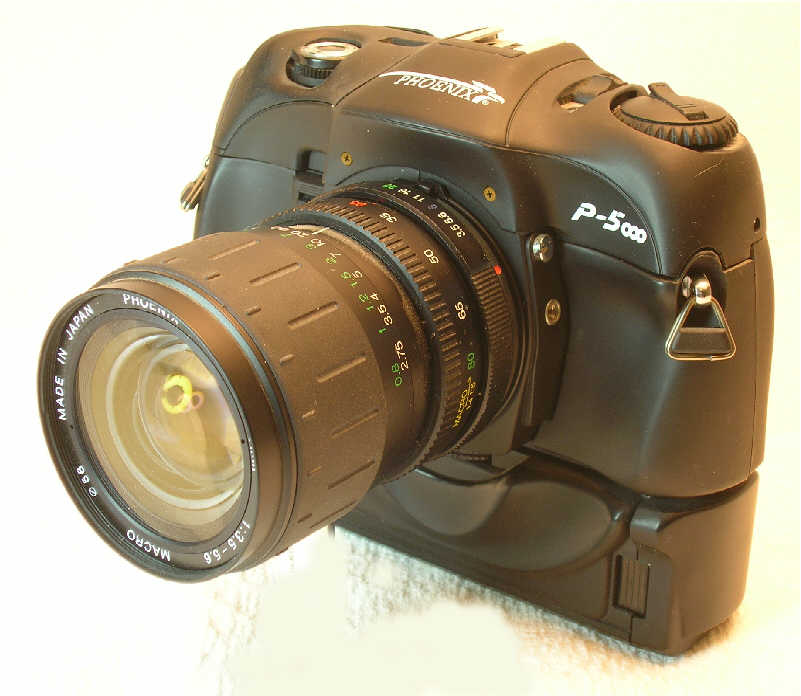
It's exactly the same as it's standard power winder, but it has a covering designed by Colani -- just like the P-5000 camera itself. The back is clearly marked "Phoenix".
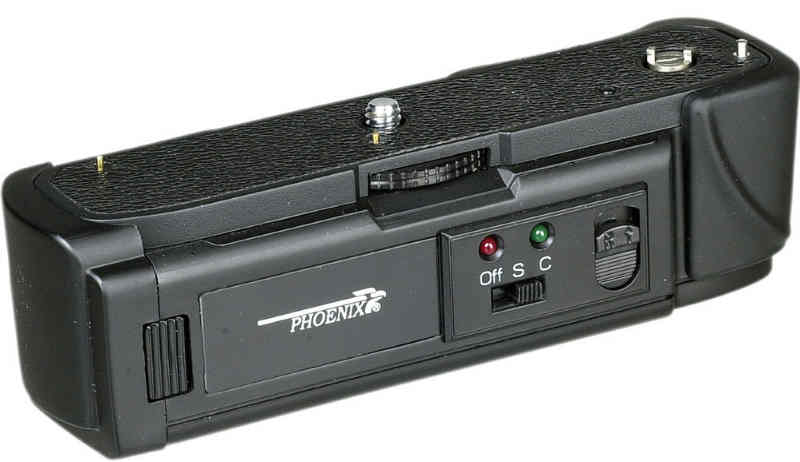
Seagull was the company that manufactured the Phoenix P-5000, and sold the exact same camera as the Seagull DF-5000. It sold a matching power winder as well,
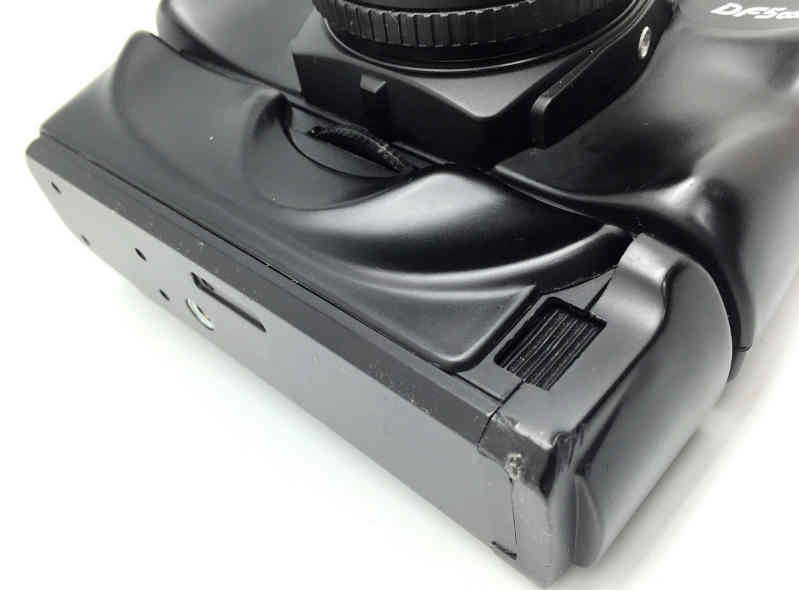
but the winder was not labeled as "Seagull" or "Phoenix" on the front or the back!
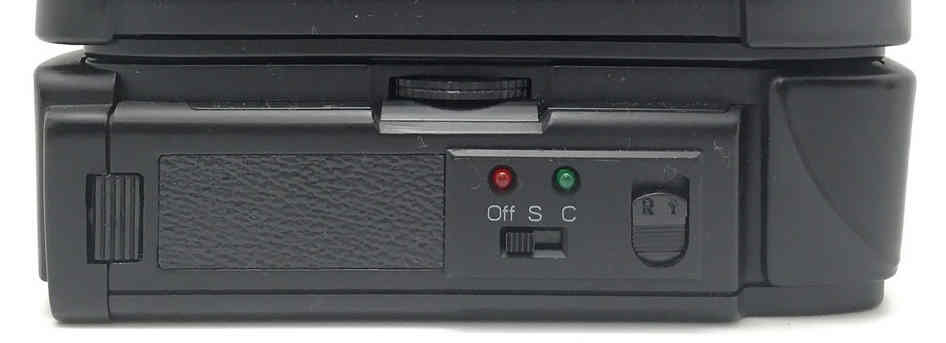
It's impossible to know what was going on. Seagull made both cameras, and perhaps Phoenix made both Power Winders but didn't allow Seagull to slap it's name on it. Who knows? In any event, the Phoenix and Seagull P/DF-5000 winders will operate on other cameras just like any other M-1 type winder.
Any M-1 type power winder is usually a bit large that a G winder, and will operate on any camera that accepts G-type winders, but will only provide the M-1 feature -- single film advance -- if the camera supports that feature.
Like the M-1 model, the M-1T can be found with different brand names, but some are not named at all for some reason:
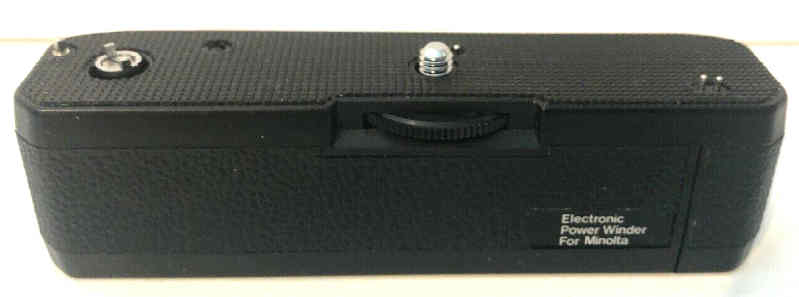
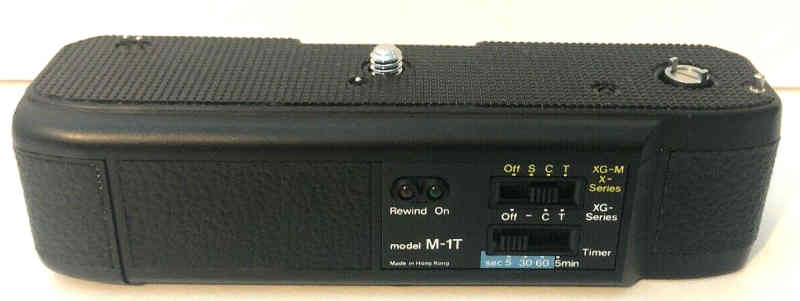
Any M-1T type power winder is usually a bit large that a G or M-1 winder, and will operate on any camera that accepts G or M-1-type winders, but will only provide the features that the camera supports.
Just as with the G, M-1, and M-1T winders, the M-1TR winders were available under different brand names from different manufacturers, such as Centon,
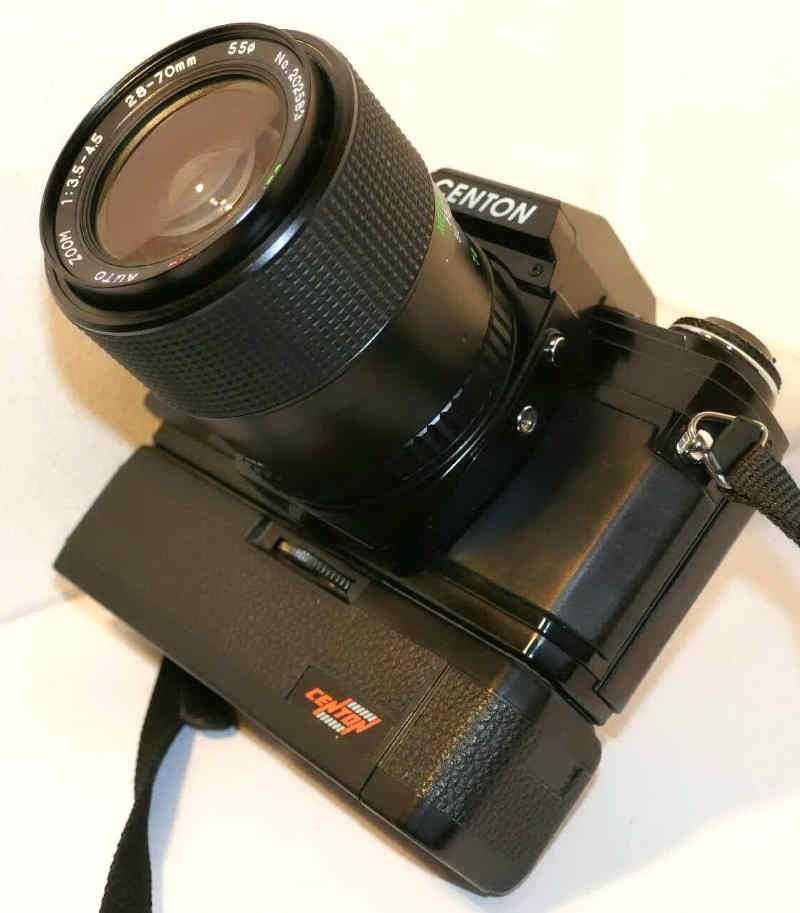
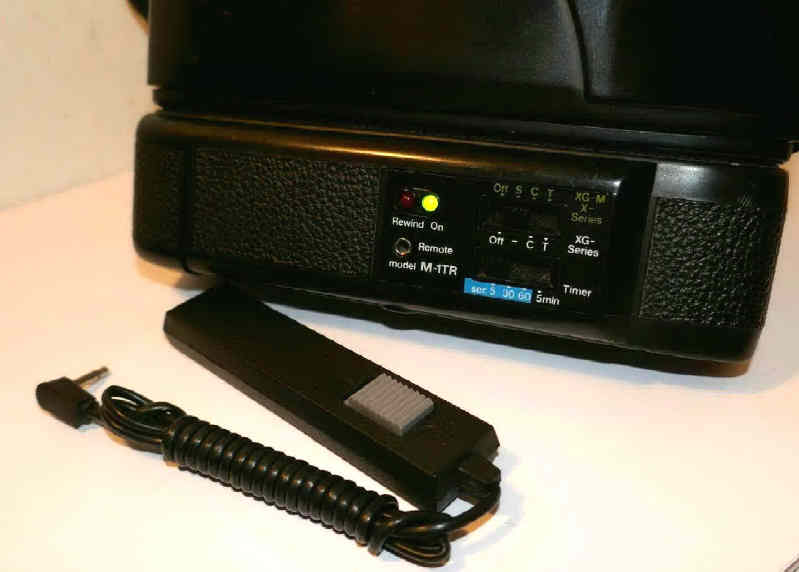
and Soligor:
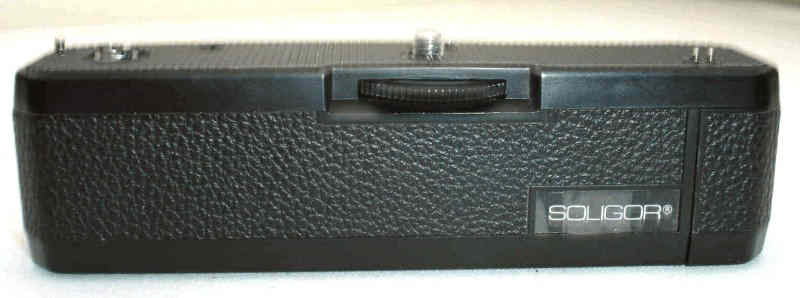
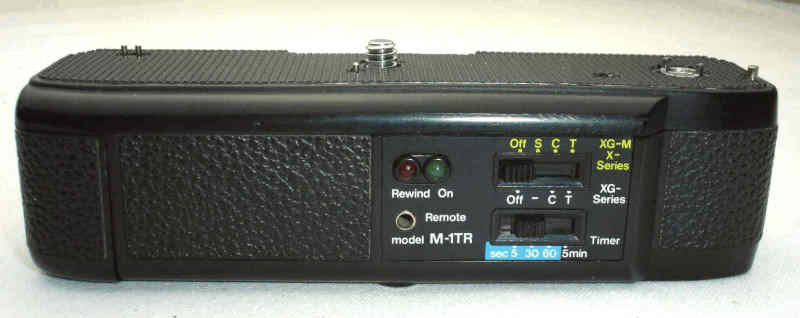
Any M-1TR type power winder is usually a bit large that a G, M-1, or M-1T winder, and will operate on any camera that accepts G, M-1, or M-1T-type winders, but will only provide the features that the camera supports.
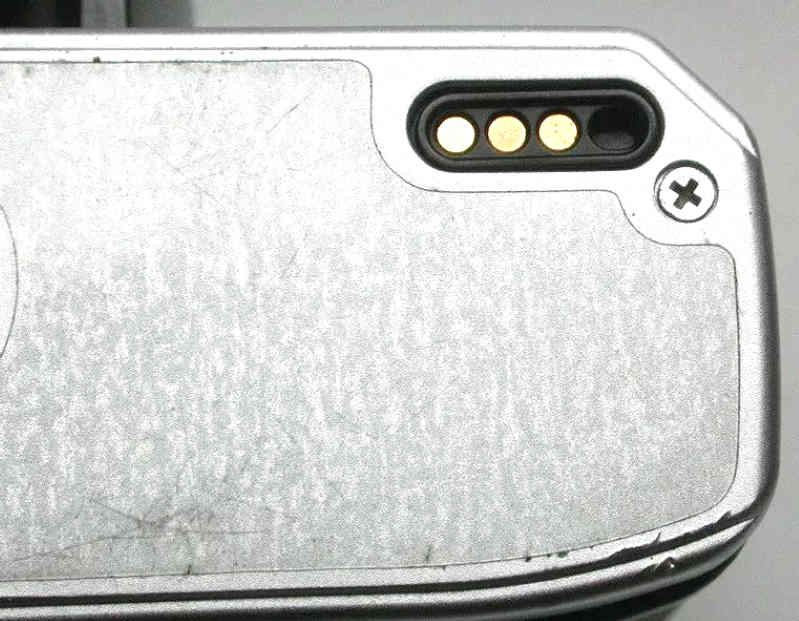
Just as important, it has to have a small enough hand grip on the front of the camera, so that the MD-1 can physically attach. The Safari DF-300, and the Seagull DF-300M are examples of Chinese/Minolta cameras that meet these requirements:
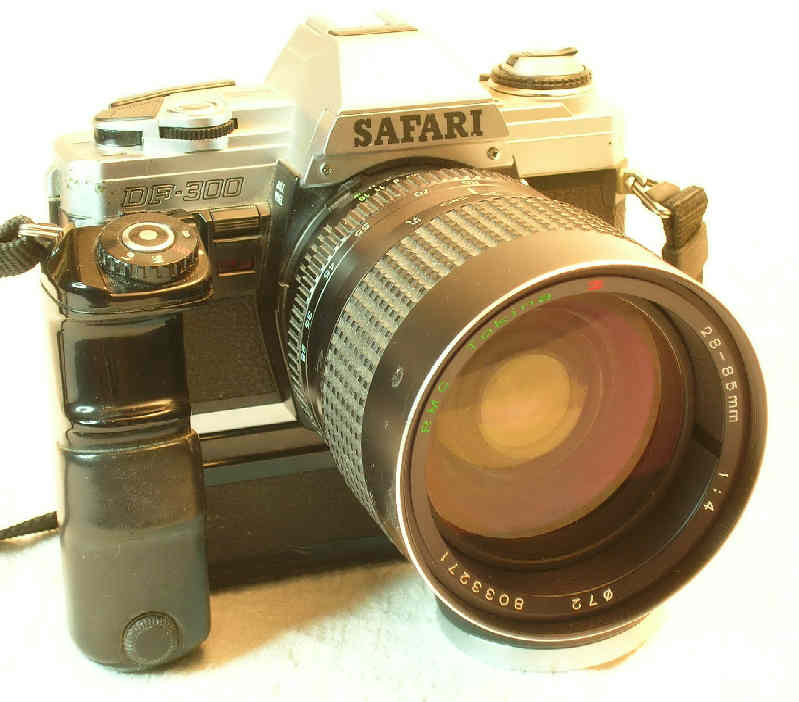
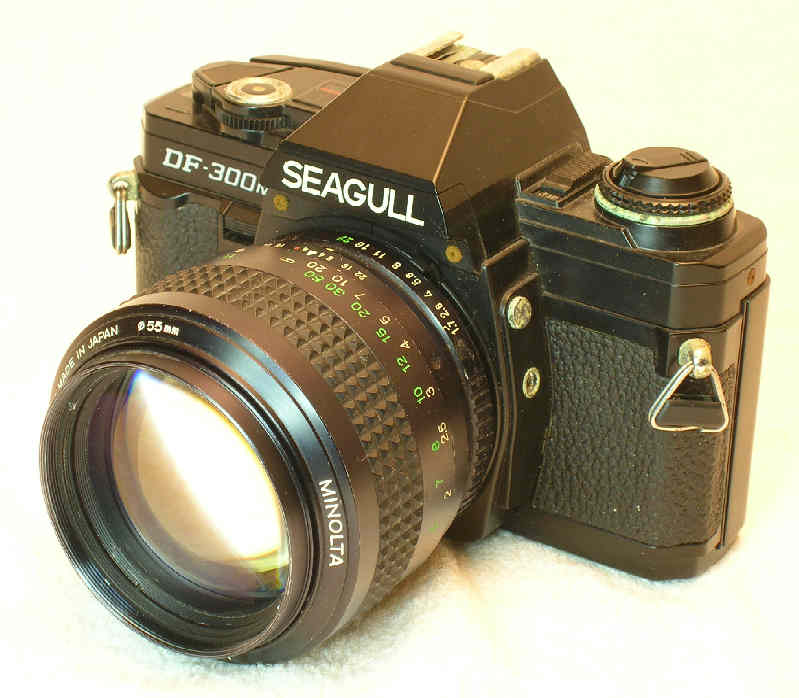
Surprisingly, there are several Chinese/Minolta cameras that have all of the electrical connections needed for use with the Minolta MD-1, but their front hand grip is too large to accommodate it, such as the Seagull DF-300, and the Colani DF5000:
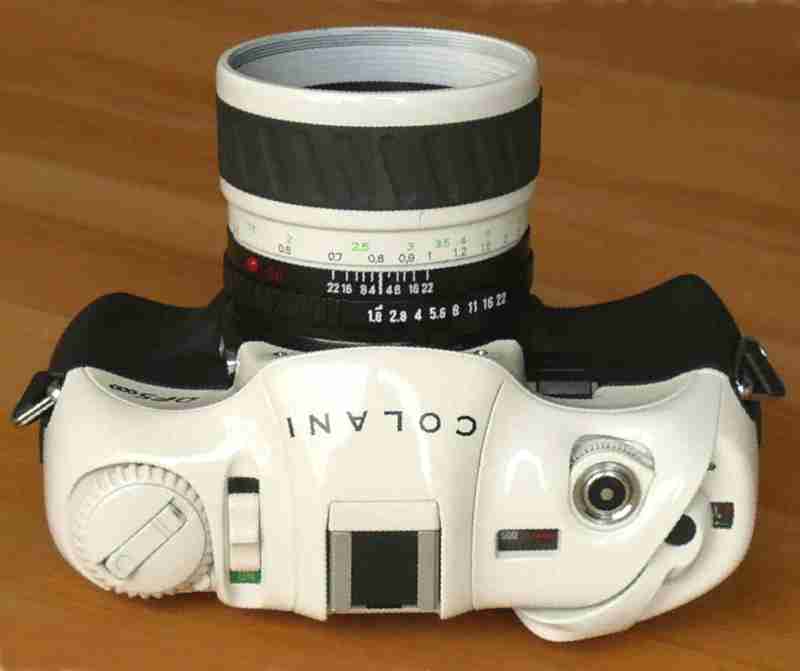
Perhaps "someone" was leaving the possibility open to developing a Chinese
Motor Drive -- or copying the MD-1. We will never know for
sure!
Except for the Minolta drives, the origin of these various winders may or
may not be known. These winders appear to have been produced by more than
one firm, and have different names, to boot. Some are marked "Made
in Hong Kong", and some "Made in China". Some are not marked at all
-- no name OR country of origin. But in the end, the important things
are "Does it work?", and "Did I get a good deal?".